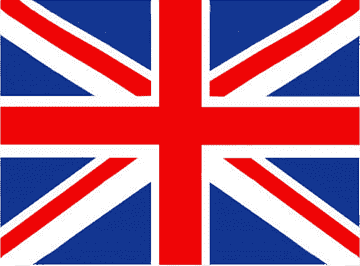
Left: Queen Anne Flag of 1707 used by Loyalists in the American Revolution. Below is the British Red Ensign flown by British troops during the American Revolution.

The Queen Anne flag would become part of the Red Ensign of the United Kingdom … adopted as the Naval Ensign in 1800. [1]Public Domain SVG file of the British Red Ensign (1707-1801) made by Wikipedia User: Wangi, based on Image:British-Merchant-Navy-Ensign.svg
The Southern Strategy – South Carolina
Per Wikipedia: The British “southern strategy” commenced in late 1778 with the capture of Savannah, Georgia, which was followed in 1780 by operations in South Carolina that included the defeat of two Continental Armies at Charleston and Camden. General Nathanael Greene, who took over as Continental Army commander after Camden, engaged in a strategy of avoidance and attrition against the British that would eventually cause the British to withdraw from South Carolina — taking my Loyalist families with them.
My grandfather Nathaniel Greene Golden was born about 1783, Saluda County near to Newberry, South Carolina.
My grandfather’s sister Mary / Margaret Frances Golden would marry into a former Loyalist family … but one deemed worthy of not exiling, usually indicating more of an attempt to remain neutral and not supportive of either side: The Cotneys of Edgefield, South Carolina.
Upper and western South Carolina were strongly loyalist areas.
Revolutionary militia were very active in these areas throughout the entire war, and both sides were hateful to one another.
>>> About the hatefulness of this war, probably 90-95 of British Colonial Militia in South Carolina were formed from locals, not troops imported from the UK or mercenaries.
Pickens County, where my family would reside at the start of the Civil War 75 years later, is named after Col. Pickens, a fierce rebel militia leader. In 1782, he discovered and hung 6 loyalists near present-day Nelson, South Carolina.
Known Loyalists:
Reference to the Ninety Six Brigade has nothing to do with the Ninety-Sixth (Judicial) District which became the Pendleton District which became Anderson, Oconee and Pickens counties.
The Ninety Six Brigade was a Loyalist Brigade formed at the town and fort of Ninety Six, South Carolina, which is to the east of Abbeville.
Known South Carolina Loyalists:
Golden, Anthony — Rank Private … Per Pay Abstract Nr __, Major Patrick Cunningham’s Regiment, Little River Militia, Ninety Six Brigade, Captain William Hendrick’s Company, men who marched to Orangburgh, SC, with Lieut Colonel John H. Cruger, 183-days pay, 14 Jun-13 Dec 1780.
Golden, Richard — Rank Private … Per Pay Abstract Nr 61, Colonel John Cotton’s Regiment, Stevenson’s Creek Militia, Ninety Six Brigade, Captain Thomas Buckum’s Company, Soldier’s Certification, for those who came to Orangeburgh with Lieut Colonel John H. Cruger at the evacuation of Ninety Six, six-months pay, 13 Jun-14 Dec 1780 (Abs Nr 4 in books of Captain John Cunningham, late Pay Master, and was in part paid by him)
Golden, William — Rank Private, Ninety Six Brigade, Captain Vachel Clary’s Company of men who came to Orangeburgh with Lieut Colonel John H. Cruger, 183-days pay, 14 Jun-13 Dec 1780.
Golding, Pearce — Described as a ‘Distressed Refugee’ among a list of Distressed Refugees from different districts in Sept 1782. See also: Pierce Golden and Pierce Goulden.
Goulden, Pierce — Rank Private. Per Pay Abstract Nr 153, Colonel James Cary’s Regiment, Camden Militia, Charlestown, SC, six-months pay, 14 Jul 1780 to 13 Jan 1781, to be paid 16 Sept 1782. See also Pearce Golding and Pierce Golden.
References[+]
| ↑1 | Public Domain SVG file of the British Red Ensign (1707-1801) made by Wikipedia User: Wangi, based on Image:British-Merchant-Navy-Ensign.svg |
|---|